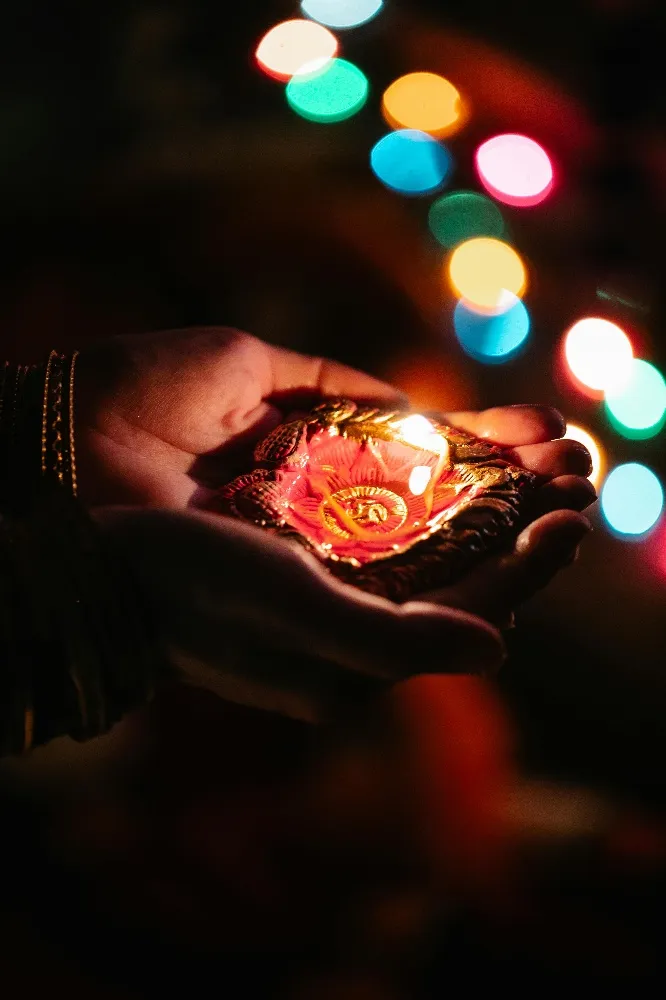9 days of Navratri Devi names, Pictures and colours
Navratri, a nine-night festival is dedicated to worshipping the Hindu goddess, Durga. As a curious child, it is natural to wonder why the festival is called Navratri (nine nights) and not Navdin (nine days). Each night represents a different form of Durga and is associated with a unique colour. The importance of 9 days of Navratri is that it brings a spiritual transformation in the lives of individuals.
How do people transform during the nine days of Navratri?
During Navratri, prayers, meditation and spiritual rituals are performed that invoke positive qualities within us and destroy the negativity of greed, laziness, and pride. This transforms us in the nine nights with the worship of 9 forms of Navdurga.
The 9 forms of maa Durga that are worshipped in the 9 days with associated colours are:
Day 1(Pratipada)- Maa Shaila Putri - white colour
The first day of Navratri emphasizes peace teaching the highest state of consciousness within the self.
All the decorations to depict this day are done in white color like white flowers, white powder Rangoli and people wearing white coloured clothes highlighting the start of the first day of the festival.
Day 2 (Dwitiya)- Maa Brahmacharini- Red colour
Brahma means divine and achar is nature or behaviour. The colour of the second day is Red. Red symbolises the colour of action.
This day devotees experience the power of action and explore the connection with the inner divinity just as Devi Parvati who undertook many sacrifices to have lord Shiva as her Partner. This teaches us to pursue our goals with determination and perseverance.
Day 3 (Tritiya)- Maa Chandra ghanta - colour Royal blue
Chandra means moon and ghanta means Bell that produces just one sound. Here, the moon refers to our mind wandering from one thought to another and Bell Signifies our mind's focus on Mother Divine.
The day Represents royal blue which depicts harmony and focus. It teaches us to withdraw from the distractions of the mind and focus on our spiritual growth.
Day 4(Chaturthi) - Maa Khushmananda – yellow
Yellow colour is a colour of warmth, it represents joy and kindness.
Maa Khushmananda refers to the cosmic energy/ Ushma and Shakti that the devi showers on humanity with her divinity. This day Teaches us to radiate positive energy and bring light into the world
Day 5 (Panchami) - Skanda Mata - colour green
The green colour represents the beginning. On this day, the motherly side of goddess Parvati is worshipped. The day teaches us to nurture our relationships and cultivate compassion
It is believed that worshipping this form of Devi with green leaved decorations brings plentiful wisdom, wealth and prosperity in one's life.
Day 6(Shashti) - Katyayani – grey
Grey colour represents balance. Maa, Katyayani is worshipped which promotes the growth of balance of emotions and humbleness in individuals. On this day, the devi is worshipped to remove all obstacles and negativity that disrupt spiritual beliefs. The day Teaches us to find equilibrium in our lives and to be humble in our achievements.
Day 7(Saptami) - Kalaratri – orange
Orange colour represents fierceness. The 7th day is known to represent dark nights.
Maa Navaratri is worshipped with orange-coloured flowers and sweets with orange colour as a theme that attracts solace and rest that the night provides us.
The day Teaches us to stand up for what is right and to overcome our fears
Day 8 (Ashtami) – Mahagauri- Peacock green colour
On the Ashtami, the 8th day of Navratri, Mahagauri is worshipped with beautiful green peacock-coloured clothes that represent a serene aspect of nature. Peacock Green colour is a unique and rare combination that drives the energy of life within us. The day Teaches us to cultivate inner peace and appreciate the beauty of the world around us
Day 9 (Navami) - Siddhitari – Pink
Pink represents affection, unconditional love, nurturing and harmony. Siddhi denotes perfection and devi Siddhitari makes the impossibility of perfection of life possible. The day teaches us to set our sights high and achieve our goals through hard work and dedication
Conclusion
Each day of Navratri challenges us to think beyond the logical and embrace the possibilities. It is the most enjoyable, celebrated, and memorable Hindu festival, during which people have experienced miracles through their deep faith in the nine-day transformative journey of Navratri.
The colours on each day of Navratri are different bringing out the uniqueness of each day with magnificence. By understanding the significance of the nine days of Navratri and the colours associated with each day, we can participate in the festival with greater awareness and devotion.
One can decorate dia’s, flowers, background, fruits and sweets as per the colour of each day. Adding colours to festivals enhances the enjoyment and learning experience.
